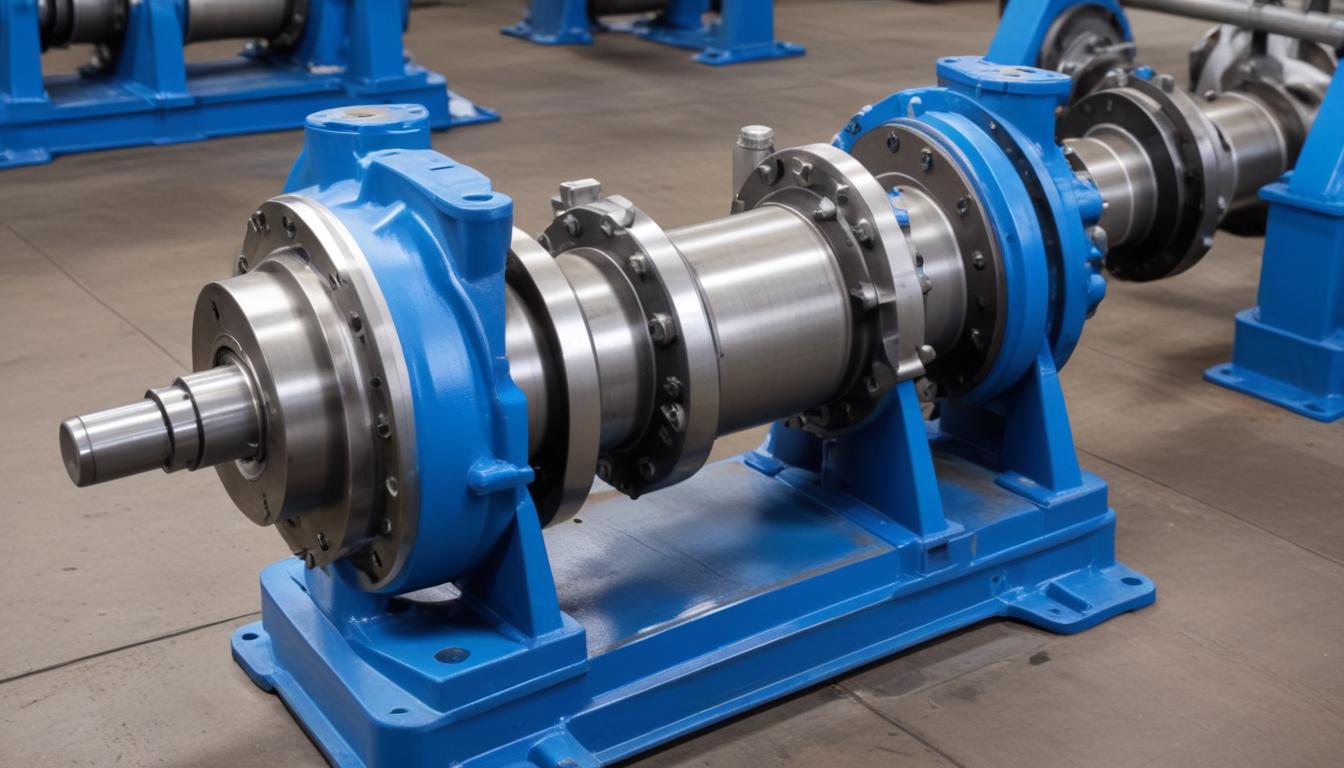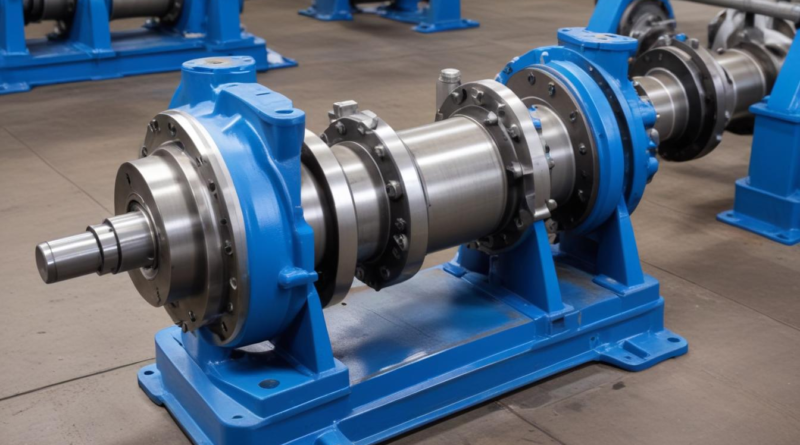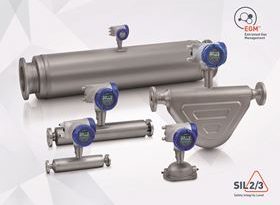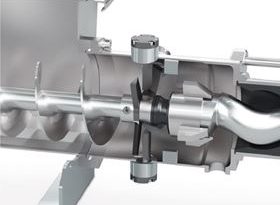the importance of pump alignment
Pump alignment is a fundamental process that ensures the seamless integration of the pump with its driving machinery, typically a motor. Proper pump alignment involves adjusting the positions of the pump and motor shafts to minimize angular and parallel misalignments. This precision is crucial for maintaining the system’s integrity and achieving maximum efficiency.
There are two primary methods of pump alignment:
- Static Alignment: Conducted when the system is not in operation, static alignment focuses on the initial positioning of the pump and motor. It involves measuring and adjusting the shaft positions using tools like straight edges and feeler gauges to ensure that the shafts are aligned horizontally and vertically.
- Dynamic Alignment: Performed while the system is running, dynamic alignment accounts for shaft deflections and operating conditions. This method utilizes advanced instruments such as laser alignment systems and dial indicators to monitor and adjust alignment in real-time, ensuring optimal performance under load.
The alignment process typically involves several key steps:
- Initial Inspection: Assessing the current alignment status using visual checks and basic measurement tools.
- Measurement: Utilizing precision instruments to determine the exact misalignment in angular and parallel terms.
- Adjustment: Making the necessary modifications to the pump and motor mounts to correct any deviations detected during measurement.
- Verification: Repeating measurements to confirm that the alignment meets the specified tolerances.
Effective maintenance of pump alignment involves regular monitoring and adjustments to compensate for factors such as thermal expansion, wear and tear, and foundation settling. Implementing a scheduled alignment check can lead to several benefits, including:
| Benefit | Description |
|---|---|
| Extended Equipment Life | Proper alignment reduces mechanical stress, preventing premature failure of components. |
| Improved Energy Efficiency | Aligned systems operate more smoothly, requiring less energy to maintain performance. |
| Reduced Maintenance Costs | Fewer misalignment-related issues lead to lower repair and replacement expenses. |
| Enhanced Operational Reliability | Minimized downtime ensures consistent and reliable system performance. |
Understanding the principles of pump alignment and implementing rigorous alignment procedures are essential for optimizing pump performance and achieving long-term operational success.
Benefits of proper alignment
Proper alignment of pumps plays a pivotal role in enhancing the overall performance and sustainability of pumping systems. One of the foremost advantages is the extended lifespan of equipment. When pumps and motors are accurately aligned, the mechanical stress on bearings, seals, and other critical components is significantly reduced. This reduction in stress translates to fewer instances of wear and tear, thereby decreasing the likelihood of premature failures and the need for costly replacements.
Another essential benefit is the improved energy efficiency achieved through precise alignment. Misaligned systems often suffer from increased friction and resistance, which forces motors to work harder and consume more energy to maintain desired flow rates and pressures. Proper alignment ensures that the system operates smoothly, minimizing energy losses and contributing to lower operational costs. Over time, these energy savings can be substantial, particularly in facilities with multiple or continuously operating pumps.
Reduced maintenance costs are also a significant advantage of maintaining proper pump alignment. Misalignment can lead to a cascade of maintenance issues, including frequent bearing replacements, seal failures, and unplanned downtimes. By ensuring that pumps are correctly aligned from the outset, organizations can minimize the frequency and severity of these maintenance tasks. This not only conserves financial resources but also allows maintenance teams to focus on proactive rather than reactive measures, enhancing overall operational efficiency.
Additionally, proper alignment fosters enhanced operational reliability. Systems that are well-aligned are less prone to unexpected shutdowns and performance fluctuations. This reliability is crucial in industries where continuous operation is essential, such as in water treatment facilities, manufacturing plants, and energy production. Reliable pump performance ensures that critical processes remain uninterrupted, safeguarding productivity and meeting operational targets.
The following table summarizes the key benefits of proper pump alignment:
| Benefit | Description |
|---|---|
| Extended Equipment Life | Reduces mechanical stress, minimizing wear and tear on components and extending their operational lifespan. |
| Improved Energy Efficiency | Ensures smoother operation with less friction, leading to lower energy consumption and reduced operational costs. |
| Reduced Maintenance Costs | Decreases the frequency of repairs and part replacements, lowering overall maintenance expenses. |
| Enhanced Operational Reliability | Promotes consistent and dependable system performance, reducing the risk of unexpected downtimes. |
Moreover, proper pump alignment contributes to environmental sustainability by minimizing energy consumption and reducing the carbon footprint associated with pump operations. Efficient systems require less power to function, thereby lowering greenhouse gas emissions and supporting corporate sustainability goals.
In summary, investing in proper pump alignment yields multifaceted benefits, including extended equipment life, enhanced energy efficiency, reduced maintenance costs, and improved operational reliability. These advantages not only bolster the financial performance of an organization but also support sustainable and reliable operations essential for long-term success.
Consequences of misalignment
Misalignment in pump systems can lead to a myriad of issues that adversely affect both the operational efficiency and the longevity of the equipment. One of the most immediate consequences is the increased mechanical stress on critical components. When shafts are not properly aligned, uneven forces are exerted on bearings, seals, and couplings, accelerating wear and tear. This heightened stress can result in frequent component failures, necessitating costly repairs or replacements and leading to unplanned downtime.
Another significant consequence is the reduction in energy efficiency. Misaligned pumps require motors to exert more power to achieve the desired flow and pressure, leading to higher energy consumption. This inefficiency not only inflates operational costs but also places additional strain on the power supply system. Over time, the cumulative effect of increased energy usage can be substantial, impacting the overall cost-effectiveness of the pumping system.
Operational reliability is also compromised due to misalignment. Systems experiencing frequent misalignment may suffer from inconsistent performance, such as fluctuating flow rates and pressure levels. This inconsistency can disrupt critical processes, particularly in industries where precision and reliability are paramount, such as in chemical manufacturing or water treatment facilities. Additionally, the unpredictable nature of misalignment-induced failures can hinder production schedules and affect service delivery.
Safety hazards present another layer of risk associated with misaligned pumps. Excessive vibration and heat generation can create hazardous working conditions, increasing the likelihood of accidents and equipment fires. These safety concerns not only endanger personnel but also pose significant legal and financial liabilities for organizations.
Moreover, misalignment can lead to structural damage of the pump foundation and surrounding infrastructure. The erratic forces generated by misaligned shafts can cause cracks and shifts in the foundation, undermining the stability of the entire system. Repairing such structural damages often requires extensive construction work, further elevating maintenance costs and prolonging system downtime.
The following table highlights the primary consequences of pump misalignment:
| Consequence | Description |
|---|---|
| Increased Mechanical Stress | Excessive wear on bearings, seals, and couplings due to uneven force distribution. |
| Reduced Energy Efficiency | Higher energy consumption as motors work harder to compensate for misalignment. |
| Operational Instability | Inconsistent performance metrics such as flow rates and pressure levels. |
| Safety Hazards | Increased risk of accidents and equipment fires due to excessive vibration and heat. |
| Structural Damage | Compromised integrity of pump foundations and surrounding infrastructure. |
| Higher Maintenance Costs | Frequent repairs and component replacements leading to elevated maintenance expenses. |
| Unplanned Downtime | Interruptions in operations due to unexpected equipment failures and repairs. |
Addressing pump misalignment promptly is crucial to mitigate these negative outcomes. Ignoring alignment issues not only jeopardizes the efficiency and reliability of the pumping system but also escalates maintenance costs and poses significant safety risks. Implementing regular alignment checks and utilizing appropriate alignment techniques are essential strategies in preventing the adverse effects associated with misalignment.
Alignment techniques and tools
 Effective alignment of pumps requires the use of specialized techniques and tools that ensure precision and efficiency throughout the process. Utilizing the appropriate methods and equipment not only facilitates accurate alignment but also enhances the overall maintenance strategy by minimizing potential errors and reducing the likelihood of future misalignments.
Effective alignment of pumps requires the use of specialized techniques and tools that ensure precision and efficiency throughout the process. Utilizing the appropriate methods and equipment not only facilitates accurate alignment but also enhances the overall maintenance strategy by minimizing potential errors and reducing the likelihood of future misalignments.
One of the most widely adopted tools in pump alignment is the laser alignment system. This advanced technology offers unparalleled accuracy by using laser beams to measure the relative positions of pump and motor shafts. The primary advantages of laser alignment systems include:
- High Precision: Provides measurements with minimal error, ensuring exact alignment.
- Ease of Use: User-friendly interfaces and automated calculations simplify the alignment process.
- Time Efficiency: Significantly reduces the time required for alignment compared to traditional methods.
- Versatility: Suitable for various types of pumps and motor configurations.
Another essential tool in pump alignment is the dial indicator. This mechanical device measures the displacement of a moving part, allowing technicians to determine the degree of misalignment. Key benefits of using dial indicators include:
- Cost-Effective: Relatively inexpensive compared to high-tech alignment systems.
- Durability: Sturdy construction ensures reliable performance in harsh industrial environments.
- Flexibility: Can be used in both static and dynamic alignment procedures.
In addition to these tools, traditional methods such as the straight edge and feeler gauges remain valuable, especially in settings where high-tech equipment may not be readily available. The straight edge method involves placing a straight edge across the coupling faces to visually assess alignment, while feeler gauges measure the gap between components to quantify misalignment.
The alignment process itself encompasses several key techniques:
- Rope or String Alignment: Involves stretching a rope or string between the pump and motor to visually inspect and adjust alignment. This method is simple and effective for preliminary assessments.
- Optical Alignment: Utilizes optical devices, such as theodolites, to measure angular and parallel deviations. This technique offers high accuracy but requires skilled operators.
- Thermal Alignment: Accounts for temperature-induced expansion by conducting alignment at operating temperatures. This ensures that the alignment remains within tolerance during actual operating conditions.
- Dynamic Alignment: Performed while the pump and motor are running, this technique considers shaft deflections and system dynamics to achieve optimal alignment under load.
To facilitate effective pump alignment, organizations often implement a combination of these techniques and tools tailored to their specific operational requirements. The following table provides a comparative overview of various alignment methods:
| Alignment Method | Tools Used | Advantages | Considerations |
|---|---|---|---|
| Laser Alignment | Laser alignment system | High precision, time-efficient, easy to use | Higher initial cost, requires training |
| Dial Indicator Alignment | Dial indicators, magnetic bases | Cost-effective, durable, flexible | Manual reading required, less precise than laser systems |
| Straight Edge and Feeler Gauges | Straight edges, feeler gauges | Simple, inexpensive, no power required | Limited precision, time-consuming for large systems |
| Rope/String Alignment | Rope or string | Easy to implement, good for preliminary checks | Low accuracy, influenced by environmental factors |
| Optical Alignment | Theodolites, optical devices | High accuracy, suitable for complex systems | Requires skilled operators, more time-consuming |
| Thermal Alignment | Temperature sensors, alignment tools | Accounts for operational temperature variations | Requires alignment at operating conditions, more complex setup |
| Dynamic Alignment | Laser systems, dial indicators under load | Ensures alignment during actual operation, accounts for deflections | Requires systems to be running, may interrupt processes |
Implementing these alignment techniques and utilizing the appropriate tools are integral to achieving and maintaining optimal pump performance. Regular alignment not only enhances efficiency but also supports proactive maintenance strategies, ensuring that pump systems operate reliably and cost-effectively over their lifespan. By selecting the right combination of methods and tools, organizations can effectively manage pump alignment, thereby safeguarding their investments and promoting sustainable operational practices.
Maintenance and monitoring
Effective upkeep of pump alignment requires a comprehensive maintenance and monitoring strategy to ensure sustained efficiency and reliability. Regular maintenance not only prevents misalignment-related issues but also extends the lifespan of pump systems by addressing wear and tear before they lead to significant failures. Implementing a structured maintenance program involves several critical components:
- Scheduled Inspections: Establishing routine inspection intervals based on manufacturer guidelines and operational demands is essential. These inspections should focus on key alignment points, checking for signs of drift, looseness, or wear in coupling components.
- Continuous Monitoring: Utilizing advanced monitoring technologies, such as sensors and automated alignment systems, allows for real-time tracking of alignment parameters. Continuous monitoring provides immediate alerts when deviations occur, enabling swift corrective actions.
- Vibration Analysis: Regular vibration assessments are instrumental in detecting misalignment. Elevated vibration levels often indicate alignment issues, bearing wear, or unbalanced components. Integrating vibration analysis into the maintenance schedule helps in identifying problems early.
- Thermography: Employing thermal imaging cameras to monitor temperature variations in pump components can reveal excessive heat generation caused by misalignment. Consistent temperature checks ensure that components operate within their optimal thermal ranges.
- Predictive Maintenance: Leveraging data from monitoring tools to predict potential alignment issues allows for maintenance activities to be planned proactively. This approach minimizes unplanned downtime and optimizes maintenance resources.
- Documentation and Record-Keeping: Maintaining detailed records of alignment measurements, maintenance activities, and any adjustments made is crucial for tracking the performance and history of the pump system. Proper documentation facilitates trend analysis and informed decision-making.
Incorporating these elements into a maintenance and monitoring framework ensures that pump alignment remains within specified tolerances, thereby enhancing system performance and reducing operational costs. The following table outlines the key maintenance activities and their respective benefits:
| Maintenance Activity | Purpose | Benefits |
|---|---|---|
| Scheduled Inspections | Regularly assess alignment and component condition | Prevents unexpected failures, ensures continuous operation |
| Continuous Monitoring | Real-time tracking of alignment parameters | Immediate detection of deviations, reduces downtime |
| Vibration Analysis | Identify misalignment and component imbalance | Early problem detection, extends equipment life |
| Thermography | Monitor temperature variations in components | Detects overheating issues, maintains optimal performance |
| Predictive Maintenance | Use data-driven insights to plan maintenance | Optimizes maintenance schedules, reduces costs |
| Documentation and Record-Keeping | Track alignment history and maintenance actions | Facilitates trend analysis, improves maintenance strategies |
Adopting a proactive maintenance and monitoring approach not only safeguards the physical integrity of pump systems but also ensures that they operate at peak efficiency. Regular alignment checks, combined with advanced monitoring techniques, enable organizations to maintain optimal pump performance, reduce energy consumption, and minimize the risk of costly disruptions. By prioritizing maintenance and monitoring, businesses can achieve long-term operational success and maximize the return on their investment in pump technology.




